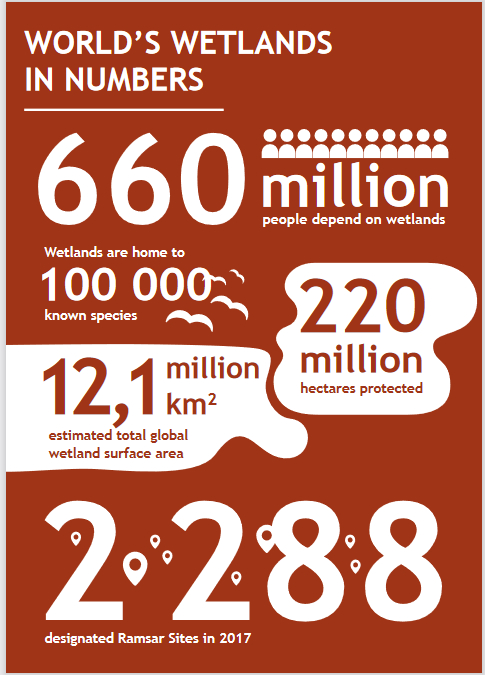Wetlands can be defined as parts of the land that are inundated with water either throughout the year or during some times in the year.
The popular metaphor used for forests is ‘lungs of the earth’. Similarly, wetlands can be described as the ‘kidneys of the earth’, since they regulate water and filter waste water. Wetlands occur at places where the water meets the land.
The Ramsar Convention is an international treaty for conservation of wetlands and was ratified by Government of India in 1982. It defines wetlands as “area of marsh, fen, peatland or water, whether natural or artificial, permanent or temporary, with water that is static or flowing, fresh, brackish or salt, including areas of marine water the depth of which, at low tides, does not exceed six meters”. As per this definition, “wetlands may include riparian and coastal zones adjacent to the wetlands, and islands or bodies of marine water deeper than six meters at low tide lying within the wetlands.”
Wetlands can be saltwater or freshwater, inland or coastal, natural or human made:
- Freshwater wetlands: rivers, lakes, pools, floodplains, peatlands, marshes, swamps.
- Saltwater wetlands: estuaries, mudflats, saltwater marshes, mangroves, lagoons, coral reefs, shellfish reefs.
- Human made wetlands: fishponds, rice paddies, reservoirs, saltpans, other constructed wetlands.
Why should we conserve wetlands?
![]()

